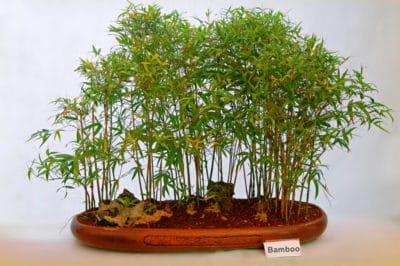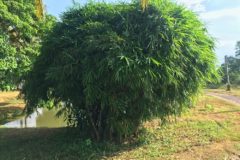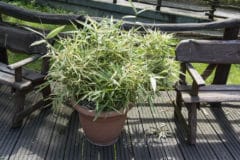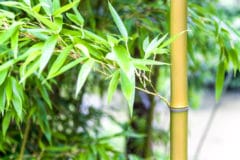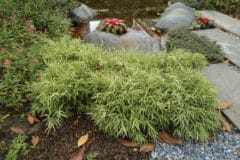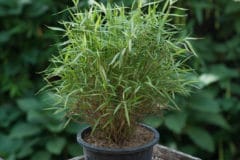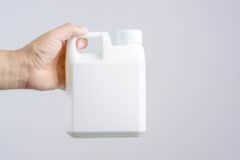Where Does Bamboo Grow?
Bamboo, a member of the grass family, is found over much of the world. With more than 1,400 known species, its native range includes warm, humid tropical regions, temperate climates and cool mountains. Some varieties are hardy down to USDA Zone 4. Bamboo ranges in size from plants of about one foot to more than 50 feet and most varieties grow very fast.
Lucky Bamboo House Plant
The most common bamboo you will see indoors isn’t actually a bamboo at all. It’s a Dracena sanderiana or braunii known as lucky bamboo. This plant will grow readily in a shallow pot with a few inches of water or soil and requires minimal care. Grow it in bright indirect light and make sure you have fertile, well-drained potting soil. Keep the soil moist; fertilizer is unnecessary.
Choosing Bamboo for Indoors
Varieties known as ground cover or bonsai bamboos are often the best choice for a house plant. They are smaller and easier to manage. These include:
- Pleioblastus pygmaeus
- P. fortunei
- Sasaella ramosa
- Sasaella masamuneana ‘Albostriata’
Taller bamboos for indoor growing include:
- Pseudosasa japonica
- Hibanobambusa tranquillans ‘Shiroshima’
- Chimonobambusa quadrangularis ‘Suow’ (Golden Square Stem)
Containers for Indoor Bamboo
Bamboo has relatively shallow roots. Running types spread by sending out long horizontal rhizomes from which new culms grow. A container with fertile soil that drains well is very important, as bamboo doesn’t like wet feet. The pot should be big enough to have two inches of space around the plant. Pot depth depends on the size of the variety; in most cases at least 12 to 18 inches.
Fertilizing Bamboo in Containers
Bamboos are grasses, and as such, you should consider them to be heavy feeders. Fertilize bamboo as you would a lawn (you can even use the same fertilizer). A high-nitrogen, low potash organic fertilizer is a good choice. Water-soluble 30-10-10 NPK can be added to the water when watering the plant – dilute to half strength. A slow release fertilizer of 28-14-14 or 17-6-10 NPK can be added to the soil.
Light for Bamboo House Plants
Adequate light is one of the most critical factors in growing bamboo indoors. An atrium or greenhouse typically provides the best environment, as both offer bright indirect light as well as some direct sunlight. You can supplement with grow lights as necessary. Bamboo from temperate climates are sensitive to day length and will begin to drop leaves as the days shorten in fall.
Watering Indoor Bamboo
Although bamboo likes plenty of water when actively growing, it cannot tolerate soggy soil. Water enough to keep the soil just barely damp. Temperate bamboos “rest” in fall and winter; decrease water to avoid root rot. Tropical bamboos, however, will continue to grow in winter if there is adequate light and warmth; their water needs don’t really change. Increase humidity by misting or using trays filled with pebbles and water.
Temperatures for Growing Bamboo Indoors
Tropical bamboos need a consistent temperature all year round. Temperate bamboos need a period of “cold” to achieve dormancy. Heat-loving bamboos should have temperatures of 100°F (38°C) during the day and 70°F (21°C) at night. For temperate bamboos, indoor temperatures can range from 60°F (16°C) during the day to 40°F (4°C) at night; sometimes colder. Use a small fan to promote air circulation.
Trimming Bamboo Houseplants
Bamboo benefits from an occasional haircut and is quite tolerant of trimming. Remove unwanted or withered culms by cutting off at soil level. You can control the height of a culm by cutting off just above a node; it will not regrow. Cutting branches from the culms can improve the plant’s appearance and make colored or patterned culms more aesthetically pleasing.
Repotting Bamboo House Plants
Like any houseplant, bamboo will eventually become root-bound and need to be repotted. Remove the plant from its pot, trim back roots and replant in fresh soil. To use the same pot, trim back the root ball by about one-third and replant with fresh soil. Running bamboos generally grow faster and will need repotting at least once a year.
